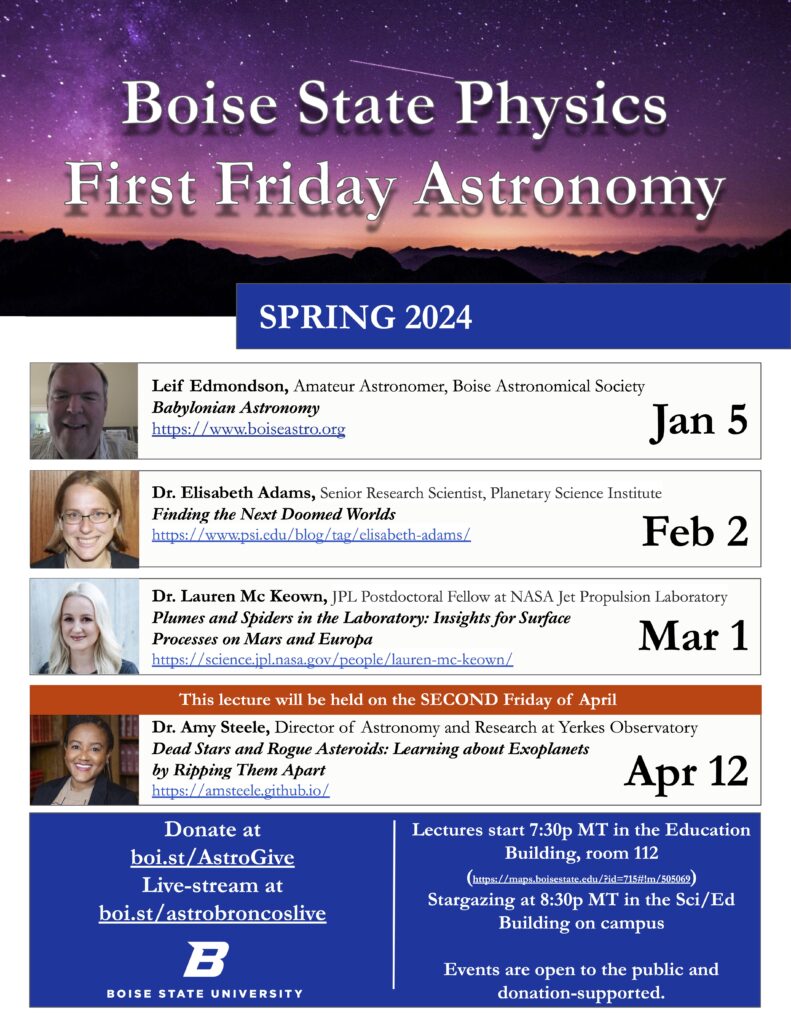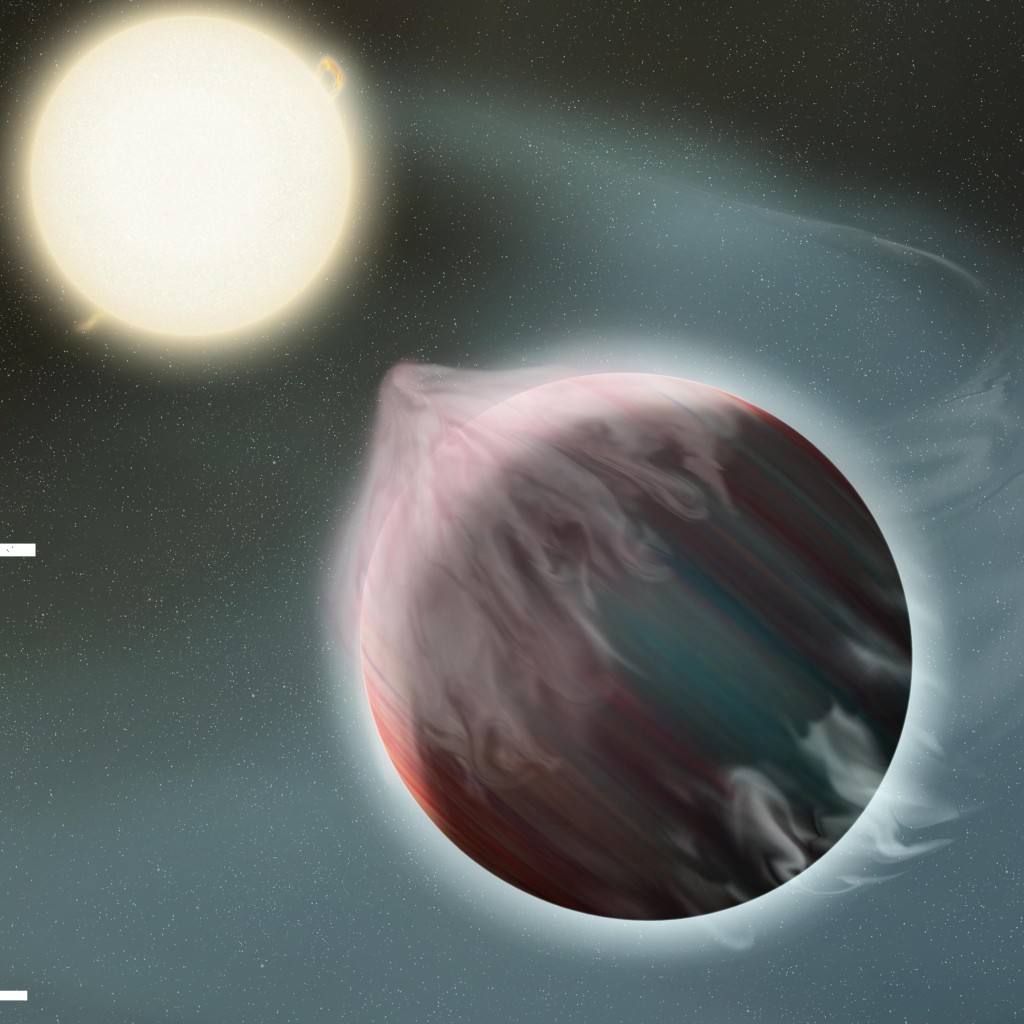Though worlds in our Solar System have been rocked by geological upheavals, mountain-shattering impacts, and climatic disasters throughout their histories, we think they have remained essentially intact. The planets we see today have been here since they first coalesced 4.5 billion years ago. But that long-lived stability may be the exception and not the rule. Indeed, astronomers now know many planets face destruction through what’s called tidal disruption, and recent searches have revealed direct evidence of the final moments for these doomed worlds.
Continue ReadingPublic Outreach

Join Boise State Physics for our First Friday Astronomy lecture series in Spring 2024. Lectures take place on the first Friday of the month (EXCEPT in April of this year when it will take place on the second Friday) at 7:30p MT on-campus and via live-stream at boi.st/astrobroncoslive. Visit https://www.boisestate.edu/physics/seminars-and-events/ for more information.

For Boise State Physics’ First Friday Astronomy event in January, we will host Leif Edmondson, president of the Boise Astronomical Society. Edmondson will talk about ancient Babylonian astronomy, so for this month’s blog post, rather than steal his thunder, I decided to talk about an astronomical tradition disconnected from Babylon: ancient Korean astronomy.
Korean astronomy goes back thousands of years and, aside from China, Korea has the longest history of astronomy in the world. Korea also hosts the oldest known astronomical observatory in east Asia, built by one of the earliest queens of the ancient world. And even today, Korean astronomers continue to innovate and discover, building on this deep past.
Continue Reading
Saturn’s largest moon, Titan, was discovered by the Dutch astronomer Christiaan Huygens in 1655, the same year courts in Virginia first ruled slavery was legal in the American colonies. It took another 350 years before humans visited Titan upclose, leaving this, the largest moon in the Solar System, an object of wonder and speculation. But even after many years of intimate study, Titan remains enshrouded, both figuratively and literally. Its secrets may persist until NASA’s Dragonfly mission visits the world again in 2034, and if history is any guide, probably long after too.
Continue Reading
Boise State Physics will host Prof. Yao-Yuan Mao of University of Utah on Friday, Oct 6 for our First Friday Astronomy lecture. Prof. Mao will talk about his work on low-mass galaxies and dark matter, and if the weather permits, we’ll stargaze on Boise State’s Quad after the lecture. In the meantime, let’s explore some of the most common questions people have about dark matter.
Continue Reading
On the morning of Saturday, Oct 14, the Sun will transform into the eye of Sauron, a dark circle wreathed in otherworldly flame. Sauron’s gaze will cross the surface of the Earth from the Pacific Ocean, through the Pacific-Northwest and Southwest, and down the spine of Central America, before fizzling out of the east coast of Brazil. Though not as dramatic as total eclipses, annular eclipses like this one are more rare, owing to the eccentricities of orbital mechanics. And the same celestial forces have also woven a tapestry of occultations connecting the Oct 14 eclipse back to the founding of the Cologne Cathedral, a turning point in modern science, and the dawn of a new age.
Continue Reading
